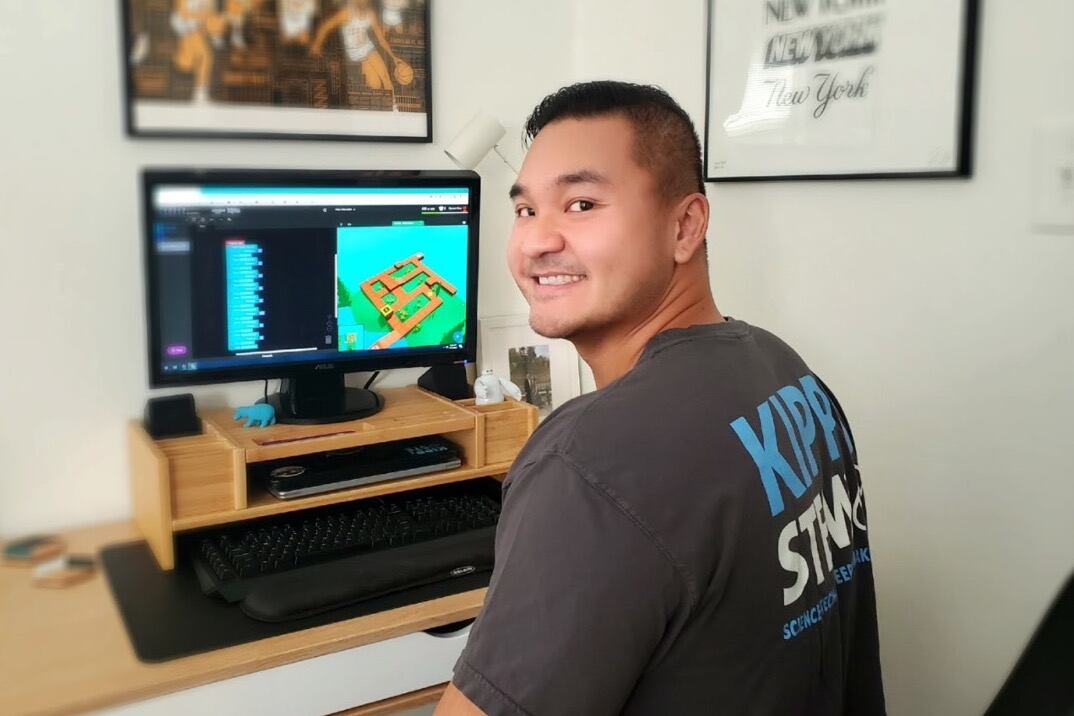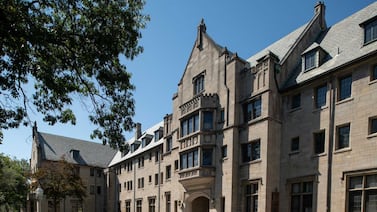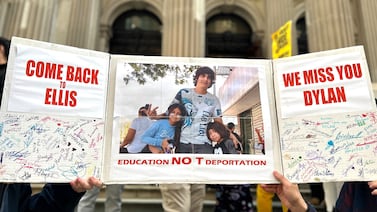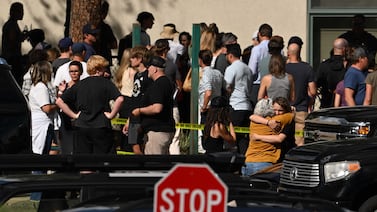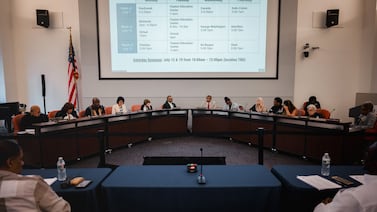Wyman Khuu teaches science and robotics to third- and fourth-graders in Harlem. During normal times, he arranges field trips to Google’s New York offices and enters his school’s robotics team in local competitions.
Even now — without day trips or tournaments, without classrooms or labs — Khuu makes the most of his time with his students. For one lesson, he had students act out the three phases of matter. For another, he used laundry day to teach about “the importance of being specific with our directions, a lesson that we can apply directly to robotics,” he said.
He is also determined to make his at-home classes as user-friendly as possible. “I’ve found that creating very simple, step-by-step directions that break up assignments into digestible segments has been really helpful,” he said.
Khuu, a teacher at KIPP Infinity Elementary, spoke recently with Chalkbeat — explaining what robotics is all about, how his own New York City public school education informs his work, and how parents can develop their children’s interest in robotics during this time.
This interview has been lightly edited for length and clarity.
In the simplest of terms, how do you define ‘robotics’?
Robotics is the process of building, designing, and programming a machine to solve a problem. But if you were to ask the students what robotics means to them, they would say that it’s working with their classmates to build an amazing machine out of LEGOs or blocks that can move and perform different tasks that they tell it to. We encourage our students to see robotics as an opportunity to take risks, work with their hands, and have fun while challenging themselves.
How are you adapting to teaching robotics remotely?
Since each of our students has access to different resources at home, I do my best to teach the core concepts of robotics through shared experiences. We recently did a lesson on algorithmic thinking, or the process of breaking down a larger problem into all of the little steps necessary to reach an outcome. I had students watch their parents in the laundry room or laundromat and write down step by step how they did laundry. Our class then shared these steps over video and did laundry following only the directions given by other students. We ended up having a lot of laundry done incorrectly because our directions were not specific enough, which helped us as a team to understand the importance of being specific with our directions, a lesson that we can apply directly to robotics.
Since school buildings closed, what has been your favorite lesson to teach, and what about it works well?
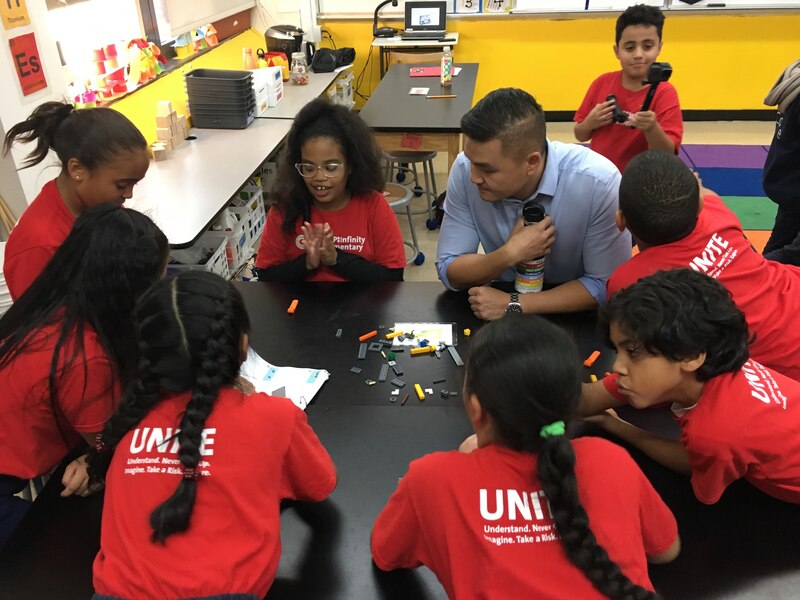
My favorite lesson to teach remotely has been a third-grade class about the three phases of matter and their atomic structure. I had students actually get up and act out how atoms would look in a cell for a solid, liquid and gas. One student, Chloe, demonstrated a solid by holding a yoga pose for 30 seconds, a liquid by showing off her free flowing ballet moves, and a gas by running around throwing her limbs every which way. With students stuck in the house all day, it’s so important for them to be able to get up and move around during lessons, and it also helps them master content in a fun way, rather than through rote memorization.
More generally, what are your best practices for distance learning?
I’ve found that creating very simple, step-by-step directions that break up assignments into digestible segments has been really helpful. The fewer directions I need to give verbally to get a lesson up and running, the better for students. Clearly labeling all of the files and materials with titles like “Open This First — Lesson Slides” and “Open This Second — Lesson Quiz” is both kind of funny and also make it much more straightforward for families to access the lessons.
I have also been previewing the week with families to help them to organize their schedules in advance. The structure of a school day in remote learning is drastically different than in-person learning, so letting families know what students are learning about and how long it will take to complete their assignments is not only appreciated, but also helps students to get their work done more regularly.
How can parents foster their children’s interest in robotics during this time?
Programs like CoderZ, Scratch, Tynker, Code.org, and Codemonkey all give students a platform to work on their computational thinking from home. There are also opportunities to learn about robotics in everyday activities. For example, learning how to follow a recipe allows students to use their algorithmic thinking. And students can work on abstraction in a game of Pictionary with their families.
Tell us about your own experience with school and how it affects your work today.
I am blessed to have been taught by great teachers, coaches, and mentors at P.S. 162 and M.S. 74 in Bayside, Queens, and then at Hunter College High School in Manhattan. I try to channel all of the positive experiences into my work with students today. One of my favorite teachers was Ms. Salak, my middle school math teacher and first-ever high school volleyball coach. She showed me that education is about far more than just grades and includes all of the experiences that come with school. That has always driven me to be the best classroom teacher that I can be, but also pushes me to offer out-of-classroom opportunities for students.
Before the crisis began, I would coach volleyball and host weekly meetings with over 25 students to work on robotics, programming and problem-solving skills. When schools closed, I didn’t want those experiences to end, which is why I have continued to offer robotics online.
What’s the best advice you ever received — and how have you put it into action?
The best advice that I’ve gotten is about coalition building. I believe it comes from an African proverb, “If you want to go fast, go alone. If you want to go far, go together.” I try and put this into action by stressing the importance of group work and learning from one another. During our weekly virtual meetings we spend the first 10 minutes playing virtual Simon Says, or having Rock, Paper, Scissors Tournaments to build camaraderie.
We also spend time having students affirm one another and talk about their strengths and weaknesses. For example, a student named Payton said he was great at drawing and building, but that he struggled with staying organized and neat. Another student, Trinity, very kindly offered to help Payton with his organization and said that she could learn from him about drawing. It’s so important that students realize that they are part of a dynamic community and one that they can learn from.

